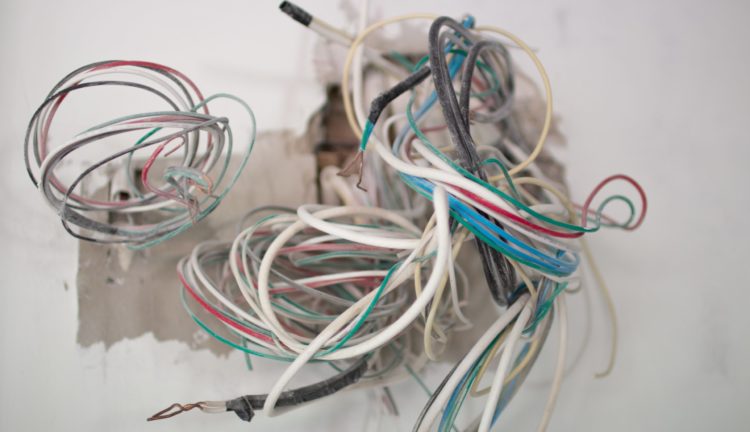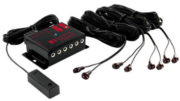Unless you’re a handyman or electronic engineer, it might be challenging to detect a wire failure. Many people ignore the common signs of wiring issues which eventually lead to significant problems.
If there are any issues with the wiring of slot machines, the management might be in trouble. That might lead to temporary closure due to risking the customer’s lives and loss of revenue since the business won’t be running.
So what are the common wiring problems, and how can you fix them?
16 Common Wire Connection Problems
It’s essential to learn some background knowledge about wiring connectivity. It’ll educate you on the overall concept of connectivity and help you notice a failed ground wire. Below are the common wire problems and their solutions:
1. Loose Wire Connections at Outlets and Switches
Loose screw terminal connections at wall outlets and switches are the most common wiring problems. It’s because these fixtures are the most used in electrical systems. This problem is usually indicated by a crackling or buzzing sound or a flicking light fixture.
Solution: You should first turn off the power of the suspected fixture. Remove the cover plate and closely examine for any possible loose wires in the screw terminal. Tie the wires in the screw terminal and fix back the cover plate.
2. Two or Additional Wires under a Single Screw Terminal
This is typically work done by an amateur as it brings a substantial fire hazard. The connectivity rule is that it’s okay to have a single wire under each screw terminal. However, it’s a violation to wedge two wires under the same screw terminal.
Solution: You begin by shutting off the power. Secondly, cut a pigtail wire with a color that resembles the ones you just disconnected. Strip some inches off the insulation on both ends of the pigtail wire. On one end, use a wire nut to fix the two disconnected wires. On the other end, attach it to the screw terminal.
3. Loose Connections on the Circuit Breaker Terminal
This problem occurs when the hot wires on a circuit breaker that are located in the main service panel aren’t connected. The typical indication is service problems or flickering lights when you wire a device on that fixture.
Solution: This problem should be solved only by a pro.
4. Wire Connections with Electrical Tape
This involves any wired connectivity done by an electric tape rather than a wire connector or nut.
Solution: Turn off the power at the switch. Remove the electric tape and clean the wires. Ensure there’s about ¾ inch of exposed wire and join the wires using an approved connector or a wire nut. Fit them back in and reconnect the power.
5. Exposed Wires
This occurs when the copper wire is exposed. Too little exposure leads to the insulation holding the screw terminal instead of the wire. The exposed wire might have contact with the metal box. It should be just enough, and you should also wrap the wires clockwise to avoid loosening.
Solution: Turn off the device’s power and disconnect the wire for Xbox one controller. Strip off extra insulation or cut off excess wire. Reconnect the wires onto the screw terminal and tug lightly onto them to ensure they are securely connected.
6. Faulty Neutral Wire Connection at the Circuit Breaker Panel
This happens when the white circuit wire isn’t mounted correctly onto the neutral bus bar.
Solution: This should be worked on by an expert.
7. Over-Lamping
It occurs when a fixture has a mounted light bulb of a higher wattage than it can handle.
Solution: Stay within the wattage limit provided by the fixture’s manufacturer.

8. Uncovered Junction Boxes
Exposed or uncovered junction boxes can electrocute people or damage the wire x device.
Solution: Buy and install a new junction box cover to reduce the risks involved. Use the screws provided for proper fixing.
9. Flickering Lights
During the windy seasons, the weather head might get frayed wiring due to the movements of the wires.
Solution: Call the electric unit who will freely replace the outdoor fitting where the overhead cables from your house’s power line come into your home.
10. Too Few Outlets
This problem is related to the heavy reliance on power strips and extension cords since few outlets exist.
Solution: You’ll have to contact a pro to come in and add more outlets.
11. No GFCIs
Ground-fault circuit interrupters reduce the risk of electrocution in wet areas like kitchens and baths by shutting down the current before it causes a deadly shock.
Solution: Replace your old receptacles with GFCI breakers or GFCIs.
12. Over-Wired Panel
This occurs when a panel contains circuits that it can handle. It is through the replacement of single-pole breakers by tandem breakers in a single slot.
Solution: Get an additional subpanel with extra slots or get the larger models.
13. Aluminum Wiring
Aluminum wiring was used in the 1960s and 70s, and it’s no longer considered as safe as copper.
Solution: Get a dielectric wire nut that’s approved for aluminum wire for each connection. These nuts prevent corrosion and maintain conductivity because they have special grease.
14. Backstabbed Wires
It happened when wires pushed in the back get loose.
Solution: Check for backstabbed connections and release the wires to attach them to the screw terminals properly.
15. Ungrounded 2-Prong Receptacles
A house’s wiring can’t safely conduct stray current escapes the wire’s confines.
Solution: Get properly grounded three-prong receptacles to replace the two-throng ones.
16. The Plug Falls Out of the Receptacle
Worn-out contacts in the receptacle aren’t able to grip prongs firmly.
Solution: Replace the old receptacle ASAP!
Tools for the Job
A good repair requires the right tools for an efficient task. Some of the tools you’ll need for a failed to wire problem include:
- Screwdrivers
- Wire nuts or connectors
- Electrical wires of different gauges
- Wire strippers
- Utility knife
- Eye protection
- Electric gloves.
Electrical Safety
Electrical cables, plugs, and appliances that are poorly wired or old are dangerous. Zero flames shouldn’t clear the possibility of a fire risk. You should often monitor the wire lead device to check for possible dangers. In addition, find out what kind of cable does your Xbox one controller use to know the proper wire nut if you need one during repairs.
Below are some danger signs to look out for danger signs.

Danger signs in electrical devices might be evident from the plugs and sockets or cables and leads. Let’s look at the risks for both.
Sockets and Plugs
- Hot sockets or plugs, flickering lights, blowing fuses, and scorch marks are signs of loose wire x device or additional electrical issues.
- Overloading sockets by plugging too many appliances leads to overheating.
- Poorly wired plugs. Any poorly fitted wire to device connector can lead to severe electrical accidents such as shock and device failure.
Leads and Cables
- You should replace frayed or damaged cables if the outer covering is in bad condition.
- Don’t put your best wire for Xbox controller under carpets and rugs where you can barely notice if they are damaged.
- Wire a device away from heat or water where they can cause accidents.
Solutions to Common Wire Problems
If you can directly notice a wiring problem and have the right tools and skills to fix it, go ahead and mend the situation. However, stay away from unfamiliar conditions since you might put yourself at risk. Getting electrocuted or having a device failed to wire are experiences to avoid. Call in a professional to do the complex repairs for you instead of endangering your life.
Conclusion
Before attempting to analyze your wiring situation, ensure that you learn how to use wire toolsets. That will clearly define the tasks you can perform and leave out for the pro. However, it comes down to the common knowledge of failed ground wire and the DIY solutions for the problem.
Have you notices any wire failure in your house? What signs alarmed you of the situation? Leave a comment.





